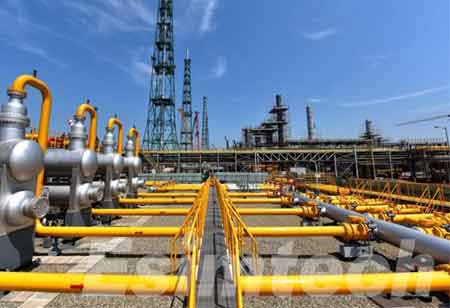THANK YOU FOR SUBSCRIBING
THANK YOU FOR SUBSCRIBING

By
Logistics Transportation Review | Wednesday, March 19, 2025
Stay ahead of the industry with exclusive feature stories on the top companies, expert insights and the latest news delivered straight to your inbox. Subscribe today.
Some of the most often used gases today include oxygen and LOX, natural gas and LNG, and nitrogen and LIN.
FREMONT, CA: Gas transportation design is critical for many sectors today. Since gases are used in increasing activities, it is important to transport them as efficiently as possible, which will boost safety and yield financial benefits.
Frequent modes of gas transportation are: Gas transportation is a crucial procedure for the usage and exploitation of technical gases, which are crucial to many different industries, including the food, construction, and health sectors, to mention a few.
Some of the most significant gases utilized today are listed below, some of which are cooled to liquid state to create cryogenic liquid gases, which increase gas transportation efficiency:
Nitrogen and LIN: Nitrogen's refrigerant qualities and inert presence have made it one of the most commonly utilized technical gases, with applications including fertilizers, food conservation operations, medicinal items, and steel manufacturing and construction.
Its cryogenic equivalent, LIN, is slightly lighter than air at normal temperature and has various applications, including food freezing and transport, biological sample cryopreservation, superconductor refrigeration, and cryotherapy for the skin.
LNG and natural gas: Natural gas transportation is critical because its resources are limited and spread across the globe. Its transportation poses a variety of obstacles, including the requirement for extensive and sophisticated pipeline transportation networks.
The use of liquefied natural gas can result in a more efficient solution, particularly when natural gas in its natural state must be transported across vast distances or underwater. LNG, on the other hand, is lighter and has a smaller capacity (one cubic meter of LNG converts to 600 cubic meters of natural gas), and sea transport tanks may transport it. Because of its numerous benefits, demand for LNG has expanded in recent years and is likely to continue.
LOX and oxygen: Oxygen is sought after due to its reactivity, as it reacts with most other common gases and elements. It aids in the chemical acceleration of combustion and oxidation, the killing of microorganisms and wastewater treatment, among other applications.
Although not flammable, liquid oxygen (LOX) is extremely cold and has a high oxidizing power, making it a popular choice for gas transportation.
I agree We use cookies on this website to enhance your user experience. By clicking any link on this page you are giving your consent for us to set cookies. More info





